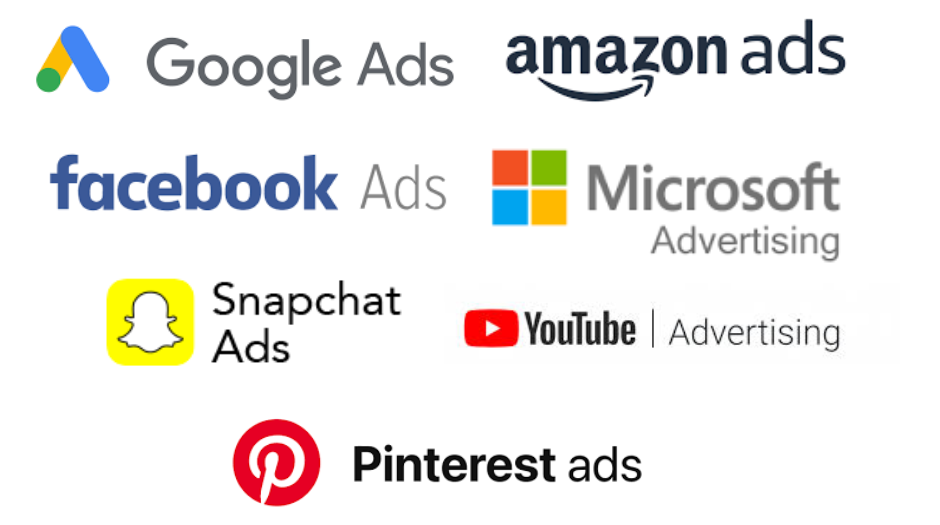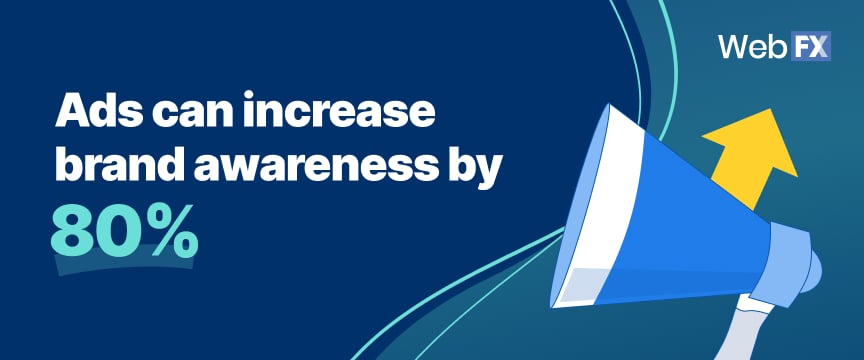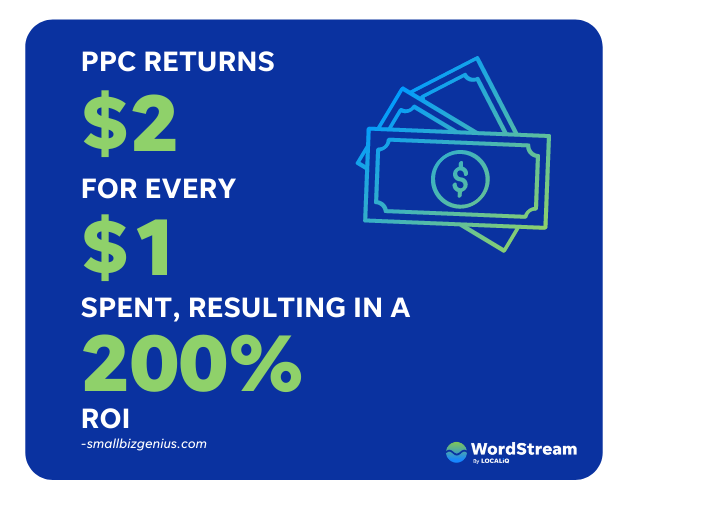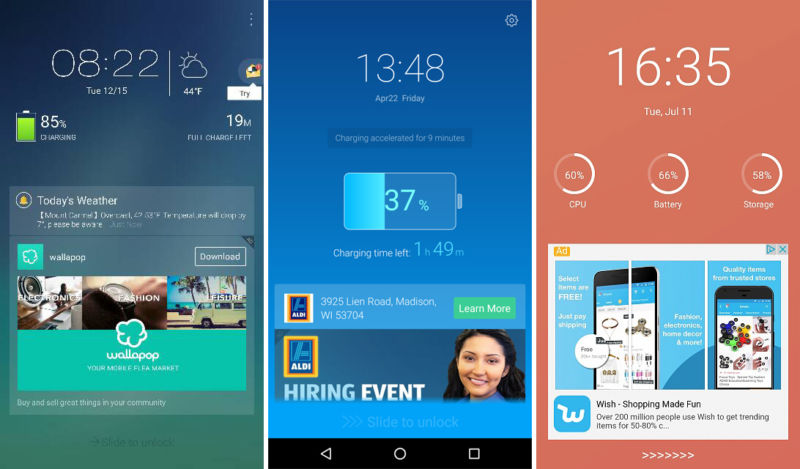Can you believe that it’s been nearly three decades since the first online ad graced us with its presence? That’s right. In 1994, the very first banner ad appeared on a previous iteration of today’s tech site, Wired.
It marked the dawn of a new era of digital marketing that would transform the world into the digital landscape we know today. Digital marketing has become a pillar of practically every successful business by driving sales, sharing brand messaging, and creating a digital “home base” for relevant brands everywhere.
In this piece, we’ll cover twenty benefits of advertising online and how brands can leverage digital ad placements to stay up to date with the advertising industry and ultimately maximize revenue.
With that said, let’s get to it.
How Are These Benefits of Advertising Online Useful for Your Brand?
Approximately 81% of consumers rely on researching brands online, be it through reviews or through the brand’s website directly. For businesses, this means that a solid online presence is an essential element for success in our modern, tech-driven society.
Combined with the advertising benefits we’re about to cover, a stable and clean website is critical in selling your brand to online users. If your brand already has a website, the next wise and logical step is to point your target market to it through advertising.

A strategically targeted ad campaign will direct high-value traffic to your website, allowing you to convert potential customers and drive sales.
If your brand doesn’t have a website or a branded social media presence, people will find your brand online in other ways. This could be through commentary on social media or review sites, leaving your brand’s reputation in the hands of others.
Your goal, in this case, as a business leader, is to control your online brand image and leverage it for growth.
20 Benefits of Advertising Online
1) Increased Sales, Leads and Equivalent Metrics
Perhaps the most important object of any advertising is to drive sales.
Online advertising can lead to increased sales by driving more traffic to a business’s website and encouraging customers to make a purchase online. Ads can also encourage users to pick up a phone and call for more information, ultimately resulting in a sale.
No matter the activity that the ad dictates the user to do, the end goal should always point back to generating revenue, which digital ads can do.
Dive Deeper: 75+ CRO Statistics That’ll Help You Increase Sales in 2023
2) Digital Ads Reinforce Credibility and Brand Awareness
There’s a lot of psychology that goes into seeing an ad online.
Your target market may have no awareness of your brand when they first view one of your ads. This is where the old-school rule of seven enters the scene and is a perfectly applicable principle in a digital context.
Users who repeatedly see your ads will be increasingly more likely to recall your business when they decide to look for a solution, at which point, you’ll be top-of-mind.
Running ads online delivers your messaging to prospects who might transact with you and serves as a public declaration of your brand’s relevance and credibility. In other words, it helps more people be aware – 80% more aware – that you exist:

Dive Deeper: Multi-Channel PPC Advertising Case Study: Boosting Your ROI
3) Ads Educate Buyers
Properly informing prospects about your business is one of the key benefits of advertising to an audience that doesn’t know you yet. They can play a crucial role in educating and informing consumers about your offerings, building trust in your business and driving sales.
Consumers must be confident that a product or service will meet their needs before purchasing. Advertising can help with this by informing target customers about how your product or service can address their personal or business problems:

By promoting insightful content that addresses specific concerns or issues, your company can establish itself as a market leader or industry expert, boosting consumer confidence in your brand over competitors.
Video ads, such as those on YouTube or TV, can also be used to instruct customers on how to use your products or services to meet their needs, such as product guides or how-to lessons. Overall, advertising can play an essential role in educating buyers to improve conversions.
Dive Deeper: 8 Benefits of Video Ads: Why You Need Them in Your Advertising Strategy
4) It’s Great for Reaching a Wide Audience
Online ads help businesses reach a global audience with their marketing message.
While traditional mediums, like direct marketing, are naturally more finite and limited in scope, online advertising campaigns can access people all over the world. And with the shipping options available today, buying from a company based in another country is not a barrier for people.
Typically, the only limitation will be your targeting criteria and your budget.
Dive Deeper: International SEO: How to Optimize Your Website to Capture a Global Audience
5) Paid Advertising Campaigns Typically Work Faster than Organic Digital Marketing
Among the broad categories of organic (unpaid) digital marketing are search engine optimization (SEO), organic social media, content marketing, email marketing and mobile marketing.
One of the key distinctions of paid advertising is that it quickly and effectively gets your brand’s messaging up front and center with your target audience, as opposed to organic methods, which are less expensive but take longer to mature.
Pay-per-click (PPC) advertising is often regarded as the “hot tap” of online marketing since it can get results within hours of flipping the switch.
Related Content: Google’s Project Magi: The Implications on SEO, Paid Ads & Jobs
6) Improved Search Engine Rankings
To supplement SEO, ads can help a brand rank higher on search engine results pages.
Online advertising itself does not directly improve search engine rankings. Search engine rankings are primarily determined by various factors such as website content, relevance, user experience, backlinks and overall site authority.
However, digital ads can indirectly contribute to improving search engine rankings through the following ways:
- Increased website traffic
- Brand exposure and awareness
- Backlink acquisition
- Social signals and engagement
- Conversion optimization
Search ads can be particularly helpful in outpacing the competition, which might outrank you in the SERPs.
Dive Deeper: 10 Most Important Google Ranking Factors (& How to Optimize for Them!)
7) Audience Targeting Can Be Easily Refined and Narrowed
Advertisers can narrow targeting to specific groups of people based on their demographics, interests and behaviors. This means you can focus marketing efforts on those who are most likely to be interested in a particular product or service.
You’ll usually see these targeting options with paid social media ads and certain paid ads on Google and Microsoft.
Here are a few popular online advertising platforms and their audience targeting features:
- Google Ads offers a wide range of audience targeting options, including demographics, interests, topics, remarketing, custom intent audiences, similar audiences, and in-market audiences. Additionally, you can target specific placements, keywords and geographical locations to further refine your audience.
- Facebook Ads provides extensive audience targeting capabilities based on demographics, interests, behaviors, connections, custom audiences, lookalike audiences and retargeting. You can also target users based on their engagement with your Facebook Page, events or app.
- LinkedIn Ads allows you to target professionals based on their job title, industry, company size, seniority, skills, and more. You can also create custom audiences using your own data and leverage LinkedIn’s lookalike audience feature.
- Twitter Ads enables you to target users based on demographics, interests, followers of specific accounts, behaviors, keyword targeting, tailored audiences (using your own data) and lookalike audiences.
Dive Deeper:
* LinkedIn Ads for Enterprise B2B SaaS: The Only Guide You’ll Need
* Do Twitter Ads Really Work? (Or Should You Focus on Other Platforms?)
* How This E-commerce Store Doubled Its Revenue Using Our Facebook Ads Advice
8) Digital Ads Can Be Cost-effective
Many online advertising platforms offer a variety of pricing options, such as pay-per-click or pay-per-impression, which can be tailored to fit a business’s budget. It can generate revenue in addition to growing brand awareness.
But the amount you pay should translate to the key performance indicators (KPIs) that you set for your promotional campaigns.
In most cases, you can expect to see a return of around 200% with PPC ads or, in other words, $2 for every $1 spent on ads:

This makes it a reasonably safe advertising medium. This, of course, can vary depending on the industry running the ads.
9) Increased Social Media Engagement
Online advertising can help businesses increase their social media engagement by promoting their profiles and encouraging users to follow them.
73% of marketers say that social media marketing works well for them:

One of the best benefits of social media ads is their organic nature. Paid promotions on Facebook, Twitter and LinkedIn encourage engagement, creating an interchange between ad recipients surrounding your brand. This can be great for getting people to share and talk about your business.
10) Retargeting Is Your Secret Weapon
Online advertising platforms offer advanced targeting options, such as retargeting, which can help you reach existing customers who have previously interacted with your business.
Perhaps one of the most advantageous aspects of digital marketing, retargeting campaigns hinge on past user data collected via website sessions and prior ad clicks, allowing you to send customized messaging (and different offers) to individuals that already have some semblance of your company.
Retargeting ads tend to convert as high as 150%.
It’s usually an easier sell to people who already have some awareness of your brand. These ads are effective in giving that little “nudge” to people already toying with the idea of engaging with you.
Moreover, retargeting ads are typically more affordable than other forms of paid advertising.
Dive Deeper: How to Easily Set Up a High-Conversion Facebook Retargeting Campaign
11) Digital Ads Results Are Measurable
Online advertising offers measurable results, allowing businesses to track the effectiveness of their marketing campaigns and make data-driven decisions about their advertising strategies.

Here are some key metrics commonly used to measure the performance of digital ads on the main advertising platforms:
Google Ads:
- Impressions: The number of times your ad was shown to users.
- Clicks: The number of times users clicked on your ad.
- Click-through rate (CTR): The percentage of ad impressions that resulted in clicks (CTR = Clicks / Impressions).
- Average position: The average placement of your ad on the search engine results page.
- Conversion rate: The percentage of users who completed a desired action on your website after clicking the ad.
- Cost per click (CPC): The average cost you pay for each click on your ad.
- Cost per acquisition (CPA): The average cost you pay for each conversion or acquisition.
- Return on ad spend (ROAS): The revenue generated for each dollar spent on advertising (ROAS = Revenue / Ad spend).
Facebook Ads:
- Reach: The number of unique users who saw your ad.
- Impressions: The total number of times your ad was shown.
- Clicks: The number of clicks on your ad.
- CTR: The percentage of ad impressions that resulted in clicks.
- Engagement: Measures such as likes, comments, shares, and video views.
- Conversion rate: The percentage of users who completed a desired action after clicking the ad.
- Cost per click (CPC): The average cost you pay for each click.
- Cost per thousand impressions (CPM): The average cost you pay for every 1,000 ad impressions.
- Return on ad spend (ROAS): The revenue generated for each dollar spent on advertising.
LinkedIn Ads:
- Impressions: The number of times your ad was shown to users.
- Clicks: The number of clicks on your ad.
- CTR: The percentage of ad impressions that resulted in clicks.
- Social actions: Measures such as likes, comments, and shares on sponsored content.
- Conversion rate: The percentage of users who completed a desired action after clicking the ad.
- Cost per click (CPC): The average cost you pay for each click.
- Cost per impression (CPM): The average cost you pay for every 1,000 ad impressions.
Twitter Ads:
- Impressions: The number of times your ad was shown to users.
- Engagements: Measures such as likes, retweets, replies, and link clicks.
- Engagement rate: The percentage of impressions that resulted in engagements.
- Click-through rate (CTR): The percentage of ad engagements that resulted in link clicks.
- Conversion rate: The percentage of users who completed a desired action after clicking the ad.
- Cost per engagement (CPE): The average cost you pay for each engagement.
- Cost per click (CPC): The average cost you pay for each click.
These metrics provide insights into the performance and effectiveness of your online advertising campaigns, allowing you to optimize your strategies and measure your return on investment (ROI).
12) Improved Customer Feedback and Audience Refinement
Online advertising can provide businesses with valuable customer feedback, allowing them to improve their advertising efforts.
For instance, many advertising platforms permit users to interact with the ads and select their ad preferences, ensuring that subsequent ads are shown to them. This is helpful for both the user and the advertiser since they won’t have to waste money on a repeat showing of an ad to a user that is disinterested in seeing those specific ads.
13) Data Is Often in Real-Time
Online advertising platforms, like Google Ads, Meta Ads and Microsoft Ads, provide real-time data (or periodically updated data), meaning businesses can quickly make tactical adjustments to their campaigns based on their performance.
It’s a convenience that allows digital advertising to be a much more dynamic experience right away as opposed to developing a print media campaign and then waiting patiently for any response, not being able to gauge true performance until much later.
14) Improves Customer Engagement
Online advertising opens the door for people to engage with the business, first by presenting an offer and followed by a call to action.
Because digital advertisements fall under the inbound marketing bucket, the intent of the ads is more inclusionary and inviting. Digital ads are meant to compel someone to engage with the brand and ultimately perform some activity, either to purchase something or contact the advertiser in some way.
15) Greater Flexibility
Online advertising offers greater flexibility in ad format, placement and timing, allowing businesses to experiment with different strategies and optimize their campaigns for maximum effectiveness.
Online promotional campaigns can also be started and stopped on a lark. This enables a digital advertising campaign to be paused, revised or stopped altogether, making it a very flexible form of marketing.
Compare this to traditional marketing methods (such as direct mail, magazine advertisements or other promotional material), where adjustments and stoppages are much trickier to accommodate.
16) Mobile Optimization
With more and more people accessing the internet via their mobile devices, online advertising has become increasingly mobile-optimized, allowing businesses to reach customers on the go.
Now, ads can appear natively within the apps, lock screens, and news feeds of people’s phones and tablets:

17) Improved Customer Insights
Online advertising helps businesses with valuable insights into their customers’ behaviors and preferences, which can inform future marketing efforts.
With Google search ads, users seek out the advertiser by inputting a query to the search engine and then anticipate related results.

Those queries help qualify those individuals and give advertisers useful insight into how users search for their brand in search engines.
18) Improved Brand Loyalty and Retention
Frequent and periodic ads can help businesses build stronger customer relationships, increasing customer loyalty and retention.
For example, an advertiser can run Facebook Ads targeting users who previously converted with a new offer. They can do this by building custom audiences of past converters and presenting them with customized offers, discounts, and sales.
Think of it this way; if you want someone to know you better, one way of accomplishing that is to reach out to them in a modest and deliberate cadence. Not too much, and not too little. Over time, you’ll grow their awareness of you and, eventually, their trust.
Dive Deeper: Facebook Ads E-commerce Case Studies that Increased ROAS
19) Enhanced Customer Experience
Online advertising can enhance the customer experience by delivering personalized, relevant and timely content, fostering engagement, and providing accessibility across various devices.
When executed effectively, online advertising can contribute to a positive and customer-centric journey, improving satisfaction and building stronger relationships with customers.
20) Indirect Sales Strategies
A lot of the time, well-thought-out ads don’t ask the user to buy anything. They simply offer the use of a tool or access to a resource that can provide value to their audience.
These ads enhance the customer experience by providing valuable information and resources to customers, such as product videos, reviews and how-to guides:

Viewed as collateral, the advertiser offers something for free, hoping the consumer will return to convert later. This is the seed laid in consumers’ minds to recall the business better whenever they have future needs and seek a solution.
Final Word on the Many Benefits of Digital Advertising
And there we have it, twenty benefits of advertising online.
Understand that this is not an exhaustive list and the real number of advantages that can come from running ads online is immeasurable. As software and tools continually get better and easier to use, digital advertising becomes simpler and more lucrative.
How will you incorporate digital ads into your business’s marketing plan?
If you’re ready to grow your business, Single Grain’s advertising experts can help.👇






